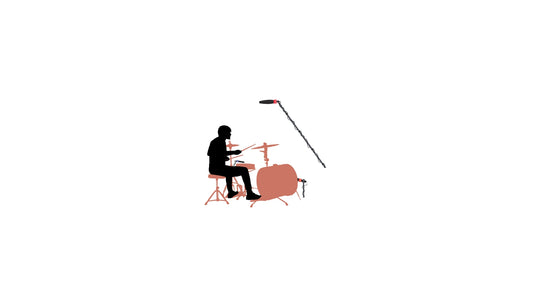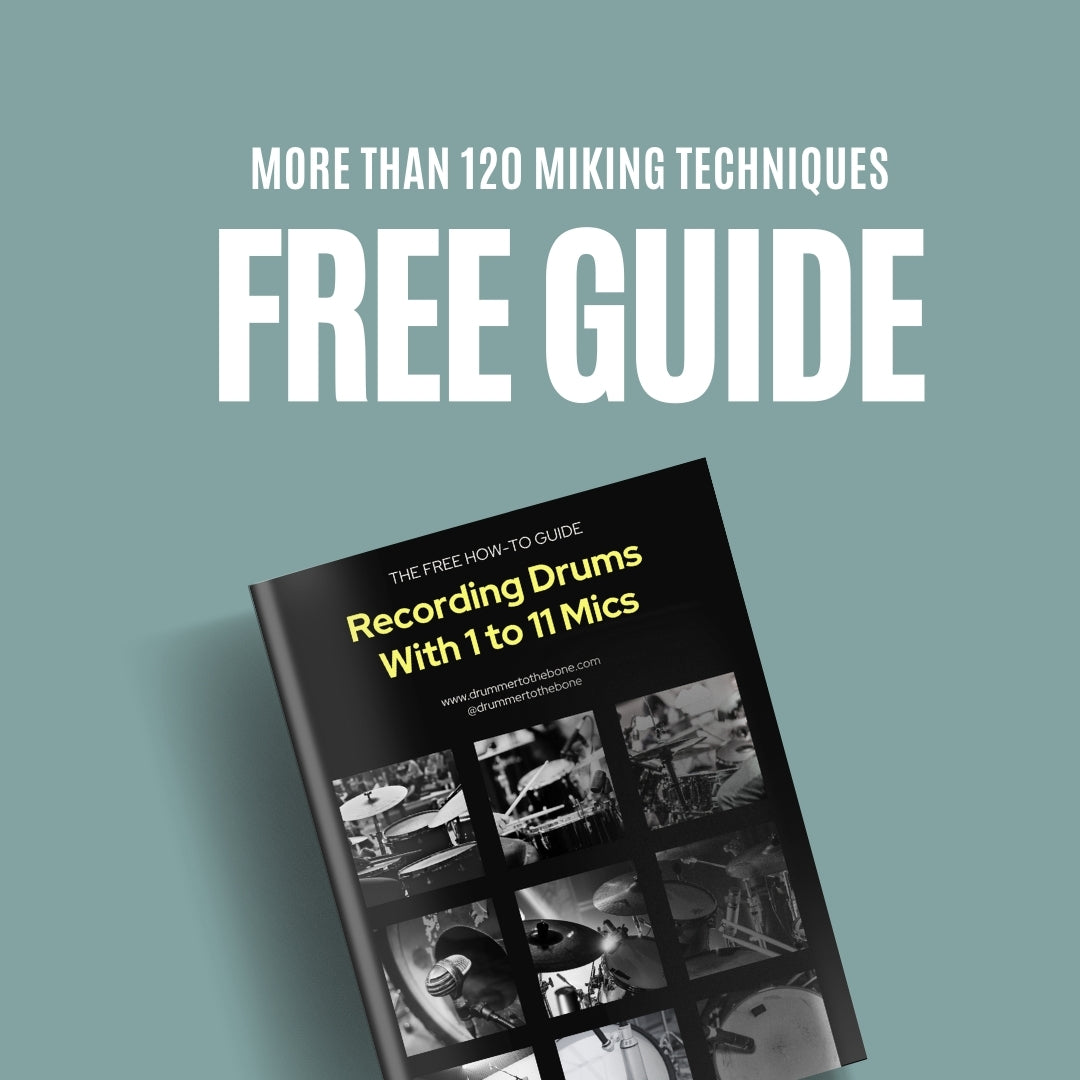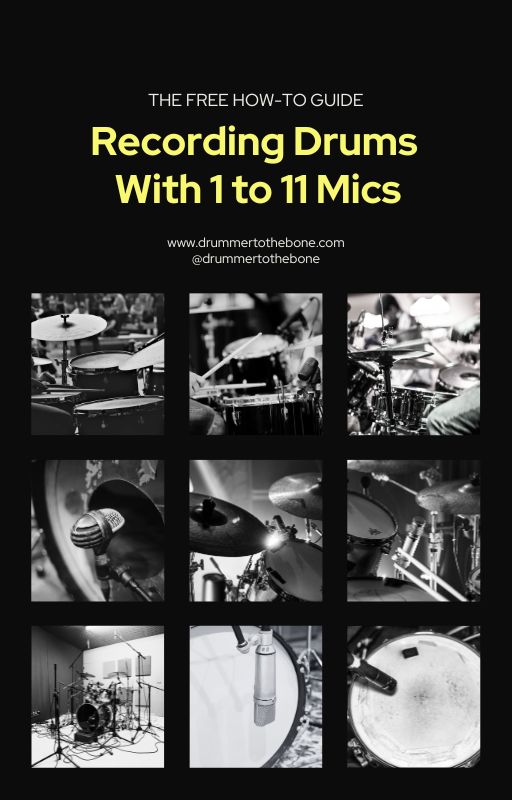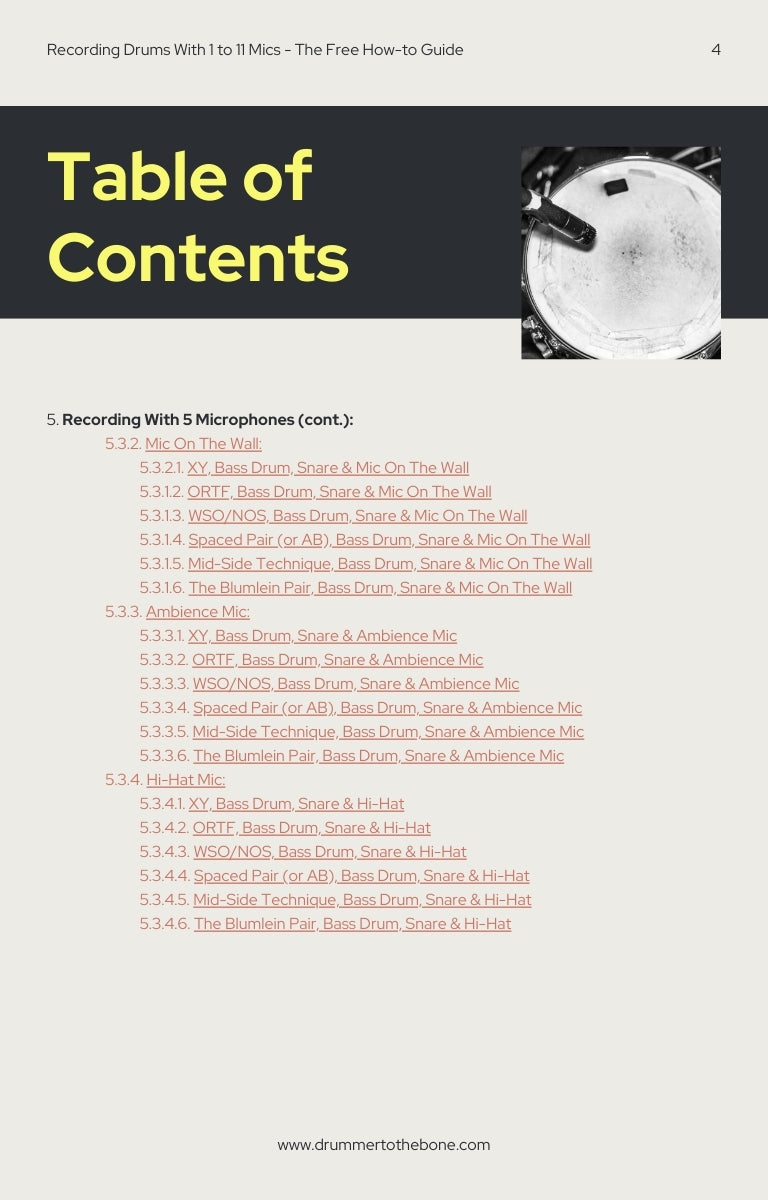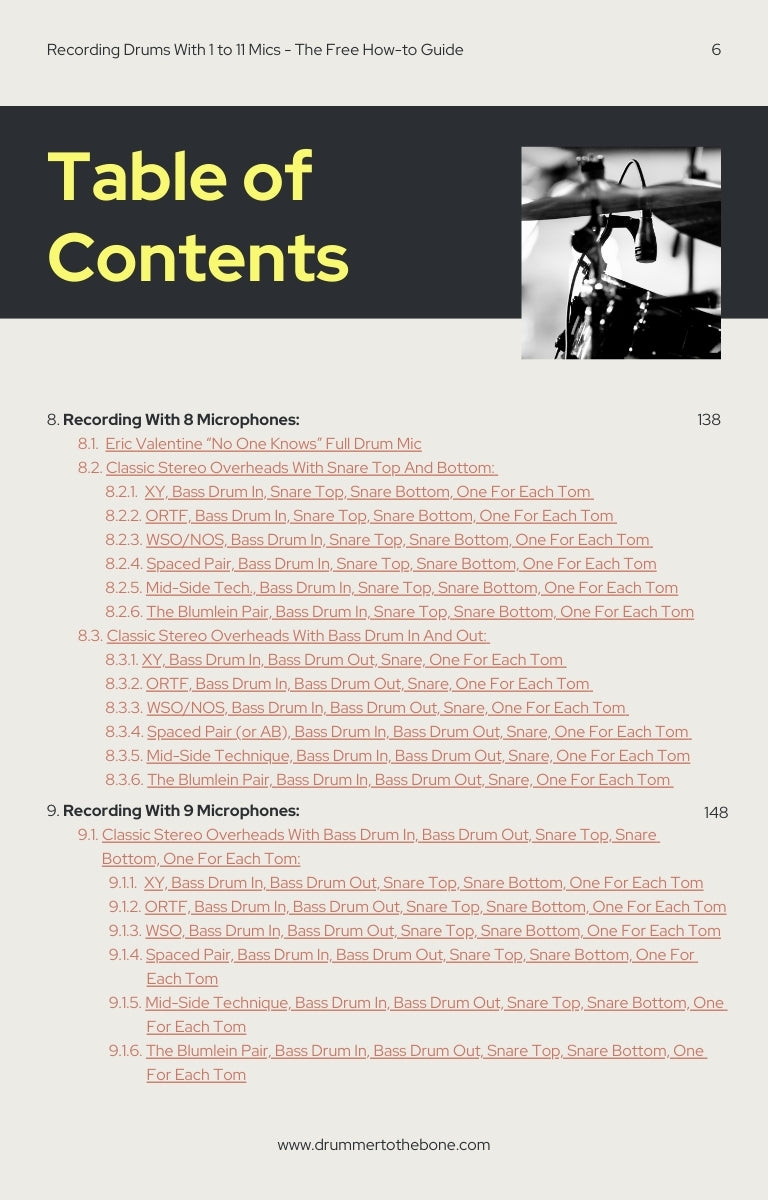Story time:
Eric Valentine is famous for—among other records—being the producer, engineer and mixer for 2002’s Queens of the Stone Age “Songs for the Deaf”, featuring Dave Grohl on drums and—arguably—getting one of the best drum sounds ever. If you want to check out how that drum sound was achieved in its entirety, you can check it out here.
Eric’s approach to miking drums for this session (as well as others since then) was to, instead of having individual mics for each instrument in the drum set, have microphones for “sections” of the drum set: left, right and front-center of the kit. Here’s a YouTube video of Eric explaining his approach (and that of the entire record, not only drums). With that, he gets the entire drumset with a very good initial stereo image. Of course, more mics were used in the session—although, not a lot more—we’ll get to that later in this guide or you can check out the links in this paragraph.
Let’s explore Valentine’s first building block of this drum sound: the 3 room mics.

*center mic should be at the same height as the “side” mics. Floor included for perspective.
The mics used by Valentine for this record were:
- Left side of the kit: AKG C12A (a multi pattern large diaphragm tube condenser from the 1960’s)
- Right side of the Kit: AKG C12A
- Center-front of the kit: Neumann CMV3 (according to Neumann, the very first condenser microphone)
Side story: Valentine uses a two-up-front technique (with additional mics, of course) in Persephone's Bees’ album “Notes from The Underworld." In this case he uses 2 Coles 4038 Ribbon Microphones, just like Eric Sarafin in the original “Recorderman” technique. If you want to know more about that, you can check it out here.
Back to Valentine’s 3-mic technique, here’s the outline:
- Place each mic (left, center and right) equidistant from each other.
- Place them around 3 feet off the floor. You don’t want to place them too high, otherwise you’ll lose a lot of low-end.
- Make sure you’re pointing them towards their corresponding section of the drum set.
Pros of this approach:
- A holistic sound of the drums, with great stereo image possibilities with the left & right mics, but a centered mono signal with the center-front.
- Better bass drum than two-up-front or triangle techniques—although probably not ideal, since the mic will be higher than the bass drum’s source of sound projection.
- If your drums sing, this approach will sing too.
Cons:
- You depend a lot on the room. Dry room, dry sound.
- Dry bass drum and the snare blends with the rest of the kit.
- Your balance determines the final sound. This approach by itself can be very unforgiving. Valentine states of Dave Grohl: “Because Grohl hits so consistently, it is much easier to accommodate the really hard playing. I have heard people speculate that there are samples layered in with the drum recording. There are definitely no samples. Grohl just plays with inhuman consistency."



